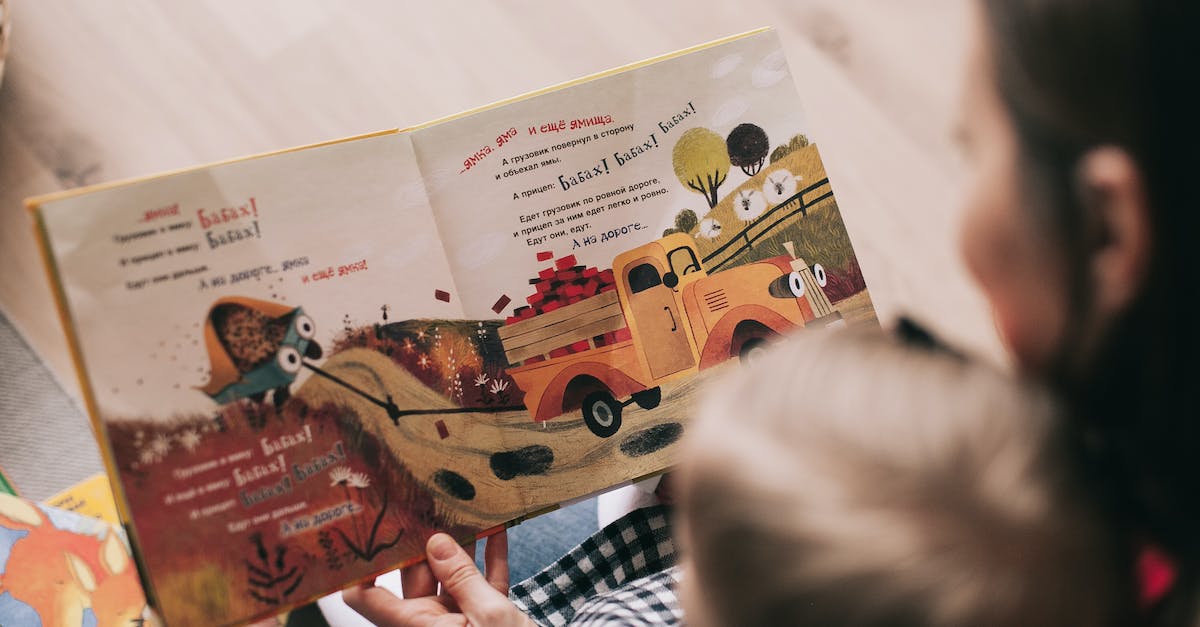Are you ready to give your child the tools they need to tackle problem-solving head-on? Do you want to help your child become a master problem solver? Then you’ve come to the right place! Problem-solving strategies for kids are the key to helping children develop the skills they need to think critically and find solutions to any challenge.
At first glance, problem-solving can seem like a daunting task. But, with a little help, problem-solving can be a fun and rewarding experience for both you and your child! With the right tools, your child can learn how to break down complex problems into manageable pieces and come up with solutions that will help them succeed.
By engaging in activities that focus on problem-solving, children develop their creativity and critical thinking skills. Whether it’s a game of charades or a jigsaw puzzle, problem-solving activities can help kids develop the skills they need to be successful. Not only that, but it can be a fun way for kids to bond and learn from each other.
So, if you’re looking for problem-solving strategies for kids, you’ve come to the right place! From activities to exercises, we’ve got everything you need to help your child become a master problem solver. Get ready to be amazed at the solutions your child comes up with!
Defining Problem-Solving

Problem-solving is an important skill for kids to develop. It involves identifying a problem, generating solutions, and evaluating the best solution. Kids can benefit from problem-solving because it can help them become more independent and resilient. So, how do you help your kids develop problem-solving skills?
Well, first, it’s important to define problem-solving for your kids. Explain to them that problem-solving is the process of breaking down a problem into smaller pieces and then coming up with solutions that can help them reach their goal. It’s important to emphasize that problem solving is a collaborative process – that it’s not just one person coming up with all the ideas, but rather a group effort.
A great way to illustrate this concept is to use a simple example. Let’s say your kids are playing a game, and they get stuck at one point. Explain to them that in order to get past this obstacle, they have to use problem-solving skills. Ask them to think of different ways they could solve the problem and then evaluate which one is the best. Encourage them to talk with each other and brainstorm ideas together – problem-solving is often much easier when you work together!
By introducing problem-solving to your kids in a fun and engaging way, you can help them develop the skills they need to be successful in life. So why not give it a try?
Teaching Problem-Solving Skills

The first strategy is to use role-play. This can work wonders in teaching problem-solving skills, especially when it comes to social and interpersonal situations. Have your child act out scenarios and then talk through the solutions. This will help them to understand that there are a variety of solutions to any given problem and that it’s important to consider all angles before deciding which one to take. And it’s fun too!
The second strategy is to use stories and examples. Kids love hearing stories, and they can learn a lot from them. Tell them stories of people who have faced similar problems and how they solved them. This will help them to understand the importance of problem-solving and to get creative when it comes to finding solutions.
These strategies can help your child develop problem-solving skills and grow as an individual. So, go ahead and give them a try!
Role Playing

Are you looking for a fun way to help your kid learn problem-solving strategies? Role-playing is a great way to get your kid to think outside the box! Role-playing is when a person or group of people act out a scene or situation. It helps kids learn how to analyze a situation and find solutions.
The first step in role-playing is to create a scenario. Have your child imagine a situation that they might encounter in real life. Then, have them create characters and a setting for the role play. They can make up characters or use real people, but make sure to keep it age-appropriate.
Next, have your child practice role play. Have them act out the scene and use problem-solving skills to figure out a solution. Encourage them to think of different ways to solve the problem. Give them tips and tricks as they go along.
Finally, have your child evaluate the role play. Ask them what they could have done differently and what they learned from the role play. This will help them recognize and apply the problem-solving strategies they learned.
Role-playing is a great way to help your kid learn problem-solving strategies. It’s fun and engaging and helps them think outside the box. Give it a try today!
Building Confidence

You know what they say – confidence is key! It’s true for adults, and it’s true for kids too. If your child is having a hard time-solving problems independently, boosting their confidence can be a great way to help them. Here are some tips to help your child build their confidence and problem-solving abilities.
First, let your child know that you believe in their abilities. If they’re struggling with a task, try to remind them that they are strong and capable. If they want to give up, encourage them to keep going, and be sure to give praise and positive reinforcement when they succeed.
Second, give your child opportunities to solve problems on their own. Let them be in charge of more tasks and responsibilities, and step back and offer support and guidance when needed. Your child will learn important problem-solving skills through trial and error.
Third, don’t forget to have some fun! Kids learn best when they’re enjoying themselves. Incorporate problem-solving activities into their playtime. You can create puzzles and games to help them practice their skills or try out apps or other resources.
Finally, equip your child with the tools they need to be successful. Teaching them strategies to help them break down problems into manageable pieces is a great way to build their confidence. You can also use visual aids like diagrams, charts, and flowcharts to help them understand the process.
With a little patience and practice, your child will be able to tackle any problem that comes their way. Building their confidence is key to helping them become successful problem solvers!
Providing Support

Let’s talk about the fifth problem-solving strategy: providing support. You know those moments when your kid is completely stuck on a problem or task and they just don’t know what to do? Well, that’s when you step in! It’s important to provide your child with support and guidance when they’re feeling overwhelmed, but it’s also important to do it in a way that’s both encouraging and non-judgmental.
First thing first: stay calm. It may seem difficult in the moment, but try your best to remain calm and level-headed. When you’re feeling frustrated and angry, it’s easy to take it out on your child, but this will only make the situation worse. Instead, take a breath and try to look at the problem from their perspective.
Next, ask open-ended questions. Instead of giving your child the answer right away, ask them questions that’ll help them figure it out on their own. This will help build their problem-solving skills and give them a sense of accomplishment when they reach the solution.
Third, be patient. Remember, problem-solving isn’t a one-time thing. It’s a process, and it takes time. Encourage your child to keep working, even when they feel like giving up. Tell them that it’s okay to take a break, but also remind them that they can do it!
Finally, give praise and celebrate their successes. Let your child know that you’re proud of them and that you believe in their ability to problem solve. Even small successes should be celebrated, as it’ll help build their confidence and motivate them to keep going.
These are just a few simple strategies for providing support when your child is struggling with a problem. Remember, it’s all about staying calm, asking open-ended questions, being patient, and praising their efforts.
Establishing Goals

You and your kiddo have made it to the last step of problem-solving: Establishing Goals! Now that you’ve figured out the problem and identified potential solutions, it’s time to set some goals and figure out how to reach them.
To get started, you and your little one need to come up with some SMART goals. That’s right, SMART: Specific, Measurable, Achievable, Relevant, and Time-Bound.
Let’s break it down: Specific goals should be straightforward and clear. Instead of saying “I want to do better in school,” your child might say, “I want to get a B or higher on my math test on Friday.”
Measurable goals are those that you can track and measure. So, in the example above, your child could keep track of how many math problems they got right on tests leading up to the big one.
Your goal should also be Achievable. That means the goal should be realistic, given the resources and skills your kiddo has. There’s no point in setting a goal that’s completely out of reach.
Relevant goals are those that make sense and are important to your child. Maybe they want to be a doctor, so having a goal of getting a B or higher on their math test makes sense in the long run.
Finally, the goal should be Time-Bound. Give your child a timeline to work with. In the example above, that timeline is Friday.
Establishing goals is an important step in problem-solving, so make sure you and your kiddo don’t skip it. Have fun with it – it’s a great time to encourage your child and help them reach their goals!
Working on Solutions

Hey mom, you know what they say: when life gives you lemons, make lemonade! We all have to face problems every once in a while, and our kids are no exception. It’s important to teach them problem-solving strategies to help them navigate through challenging situations. Here are some tips for helping your kids work on solutions:
- Encourage your kids to think of different solutions to the problem. Brainstorming can help them think of new ideas.
- Help your kids to understand that there may be more than one solution to the problem. Encourage them to explore all the possibilities.
- Give kids room to explore and experiment. Allow them to make mistakes and learn from them.
- Teach your kids how to break down a problem into smaller steps. This will help them to understand the problem better and develop a plan of action.
- Teach your kids to plan ahead and think about the consequences of their actions.
- Encourage your kids to take risks and be creative.
- Most importantly, give your kids the tools they need to be successful. Praise their efforts and celebrate their successes.
Remember, when it comes to problem-solving strategies for kids, it’s important to be patient, supportive, and encouraging. With a little bit of practice, your kids will soon be problem-solving like pros!
Conclusion
As I’ve discussed in this article, problem-solving strategies for kids can be a great way to help them develop their critical thinking skills. By using tools such as brainstorming and role-playing, kids can learn to think creatively and come up with unique solutions to any problem they may face. I hope this article has helped to give you some ideas on how to help your children become more adept at problem-solving.
So if your child is having trouble with a particular problem, don’t throw in the towel just yet! Take some time to sit down with them and help them brainstorm a few different solutions. You never know what creative idea they might come up with. And who knows, maybe the solution they devise will be the one that works best!
At the end of the day, the most important thing to remember is that problem-solving is a process. It takes patience, practice, and a willingness to learn to be successful. But with some effort, you can help your child develop the problem-solving skills they need to succeed in life. So don’t give up – get out there and get solving!
Reference:
- https://blog.udemy.com/problem-solving-strategies-for-kids/
- https://www.care.com/c/stories/6282/7-ways-to-help-your-child-develop-problem-solvi/
- https://www.scholastic.com/parents/family-life/parenting/discipline/teaching-kids-problem-solving-skills.html
- https://www.psychologytoday.com/us/blog/the-mindful-self-express/201708/problem-solving-strategies-kids
- https://www.understood.org/en/learning-attention-issues/signs-symptoms/trouble-with-problem-solving/5-ways-to-support-problem-solving-at-home
- www.mindtools.com/pages/article/smart-goals.htm
- https://www.helpguide.org/articles/parenting-family/teaching-problem-solving-skills.htm





